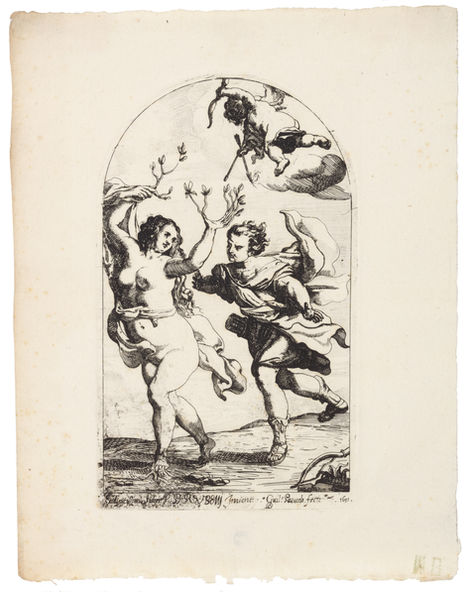Willem Panneels (Aachen circa 1600-1634 Baden-Baden)
Apollo and Daphne
signed, dated and inscribed ‘Excellentissime Pictoris. P. P. Rubeni. inuent. Guils. Panneels fecit. 1631.’
etching, watermark fragmentary arms of Amsterdam
16.1 x 9.5 cm (plate); 21 x 16.2 cm (sheet)
Hollstein 22 [1], second and final state, a very good, richly inked impression with strong
plate tone and very wide margins, there is some scattered slight foxing and some slight discolouration to the sheet, there is a horizontal drying fold in the centre of the sheet, there is a crease at lower right, otherwise in beautiful untreated condition
Provenance:
Museum Boijmans Van Beuningen, Rotterdam (L. 700a and 1855a).
[1] K.G. Boon and J. Verbeek, Dutch and Flemish Etchings, Engravings and Woodcuts. ca. 1450-1700. Volume XV. Van Ostade-De Passe, Amsterdam, 1964.

